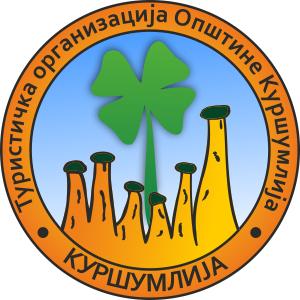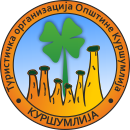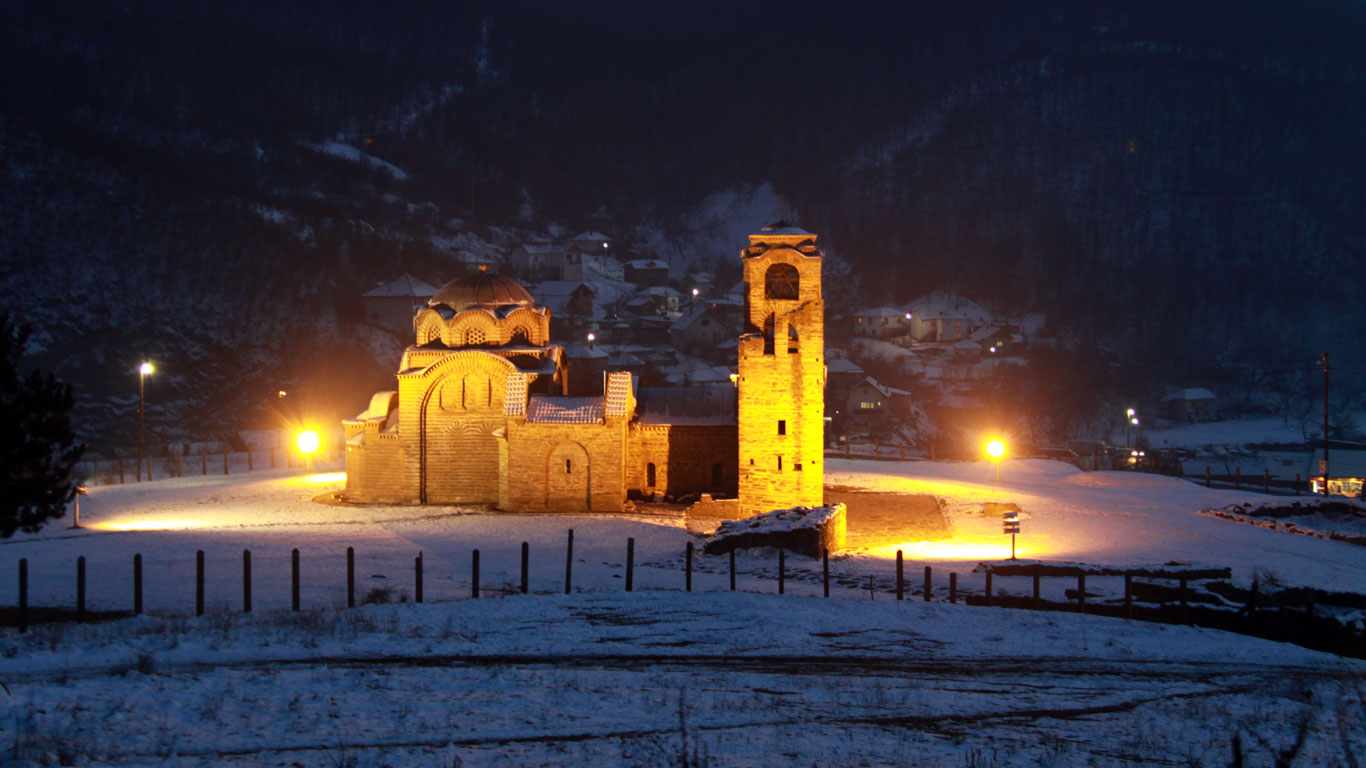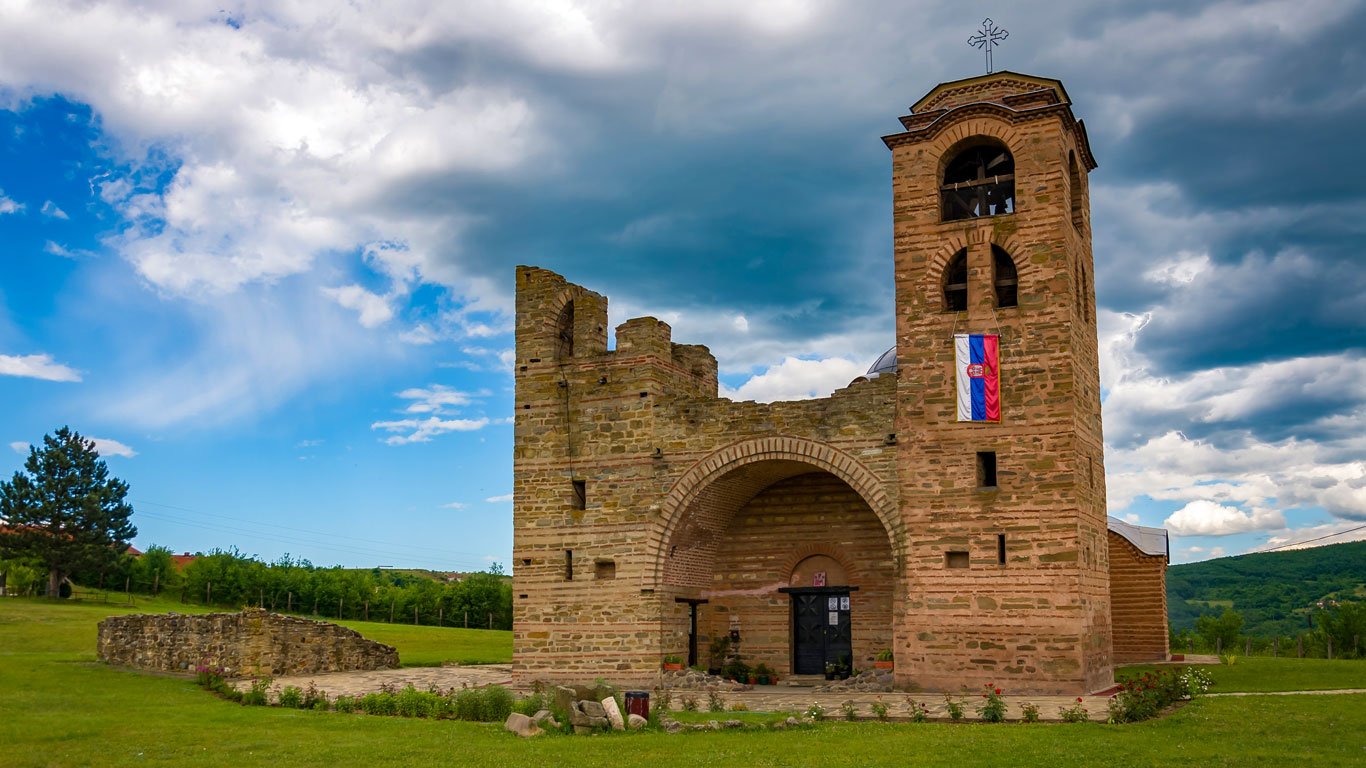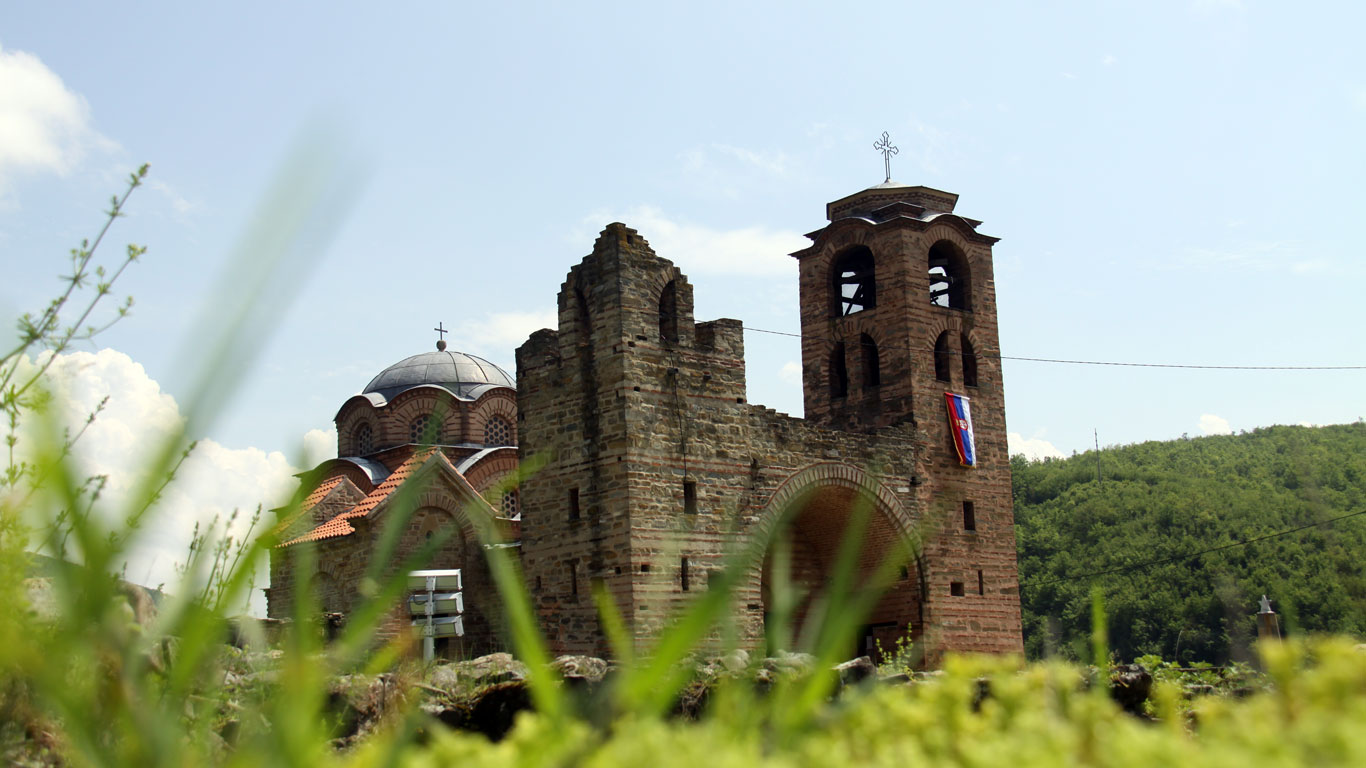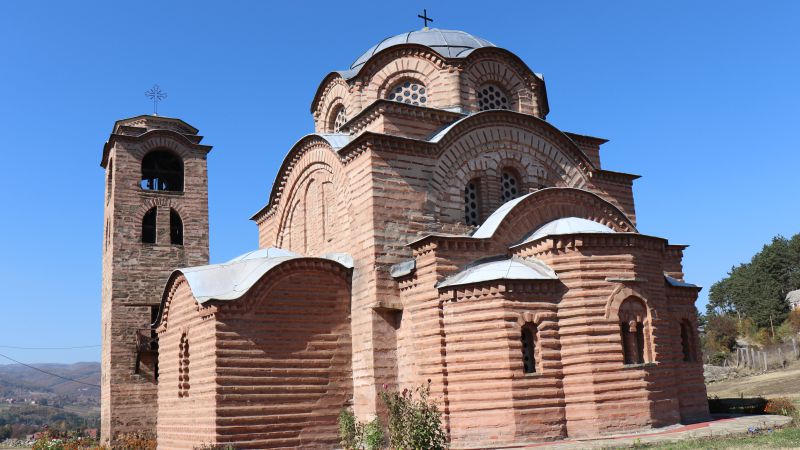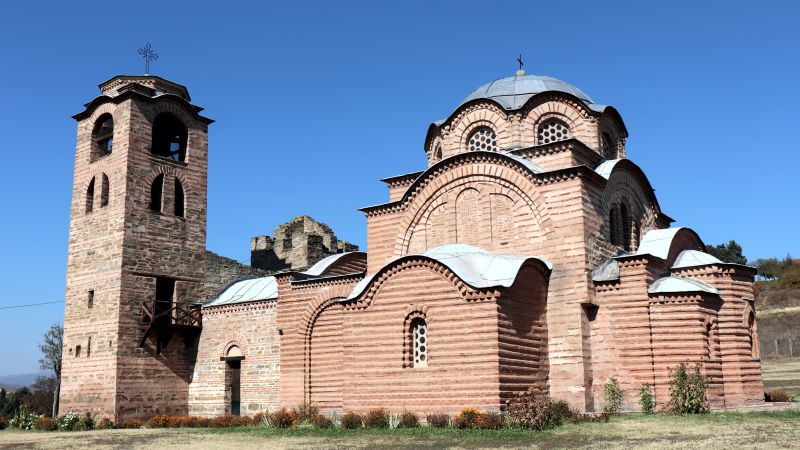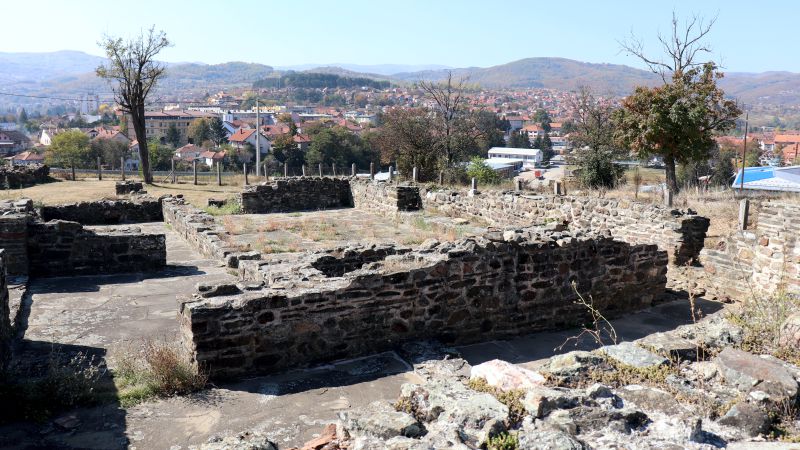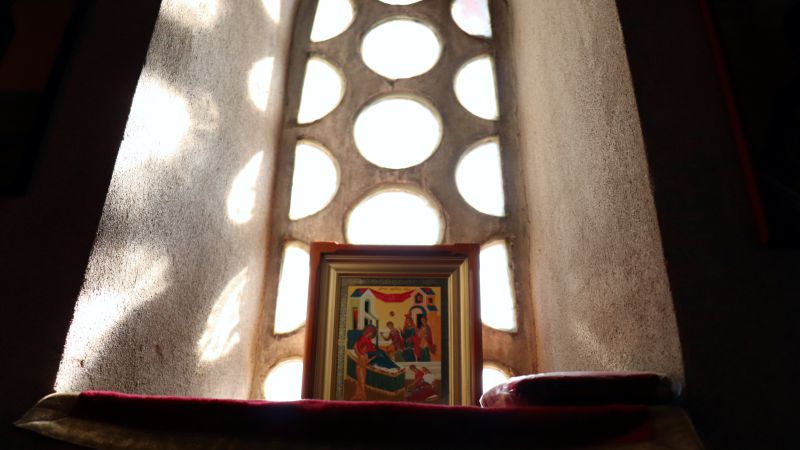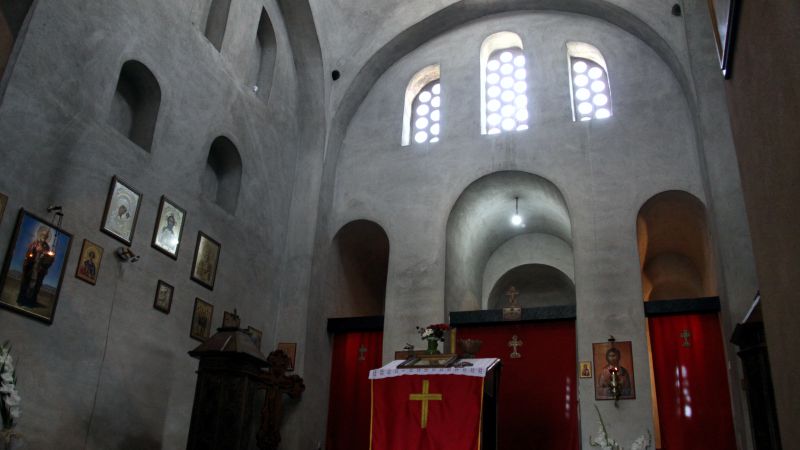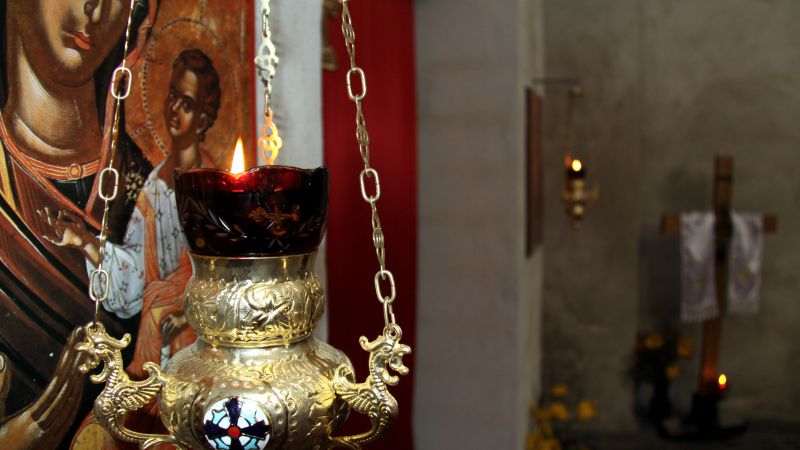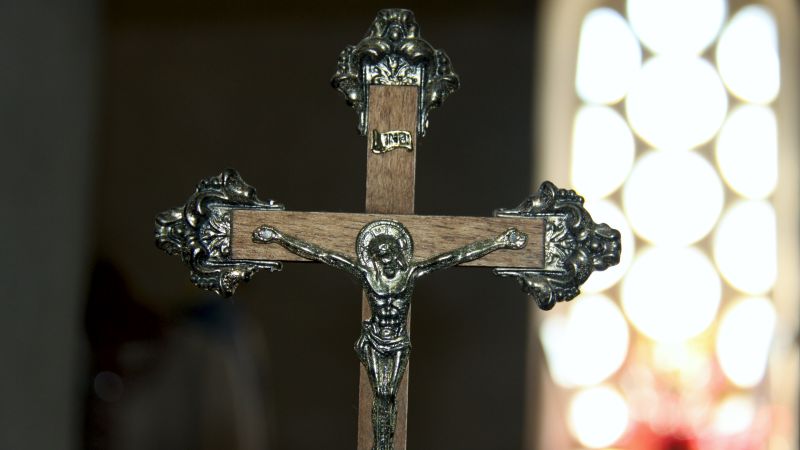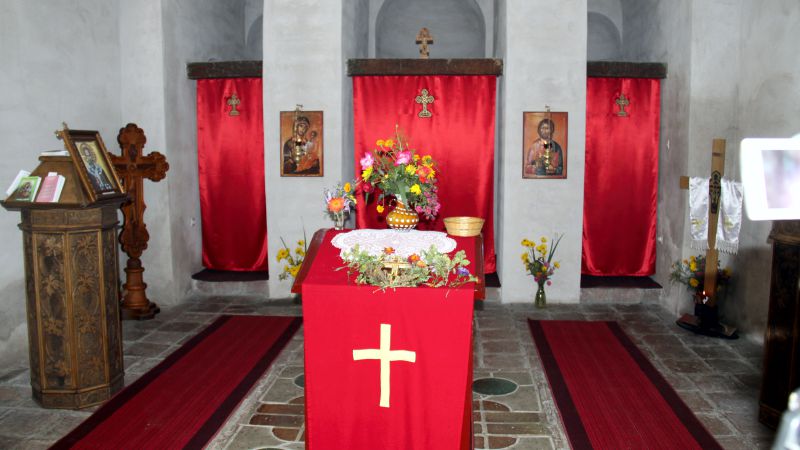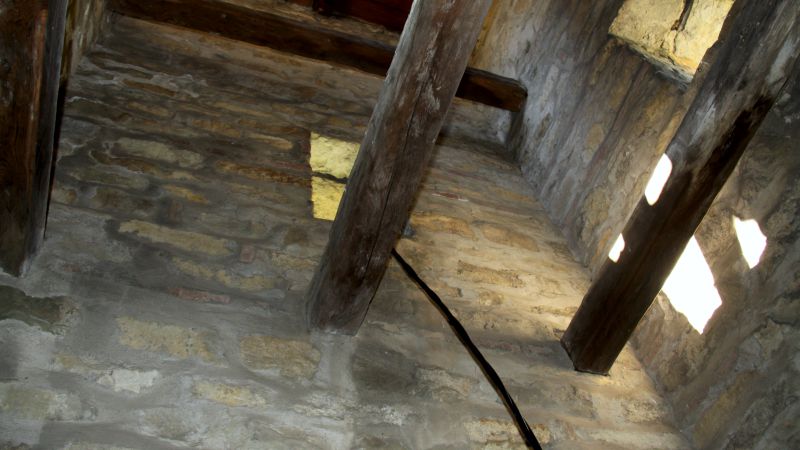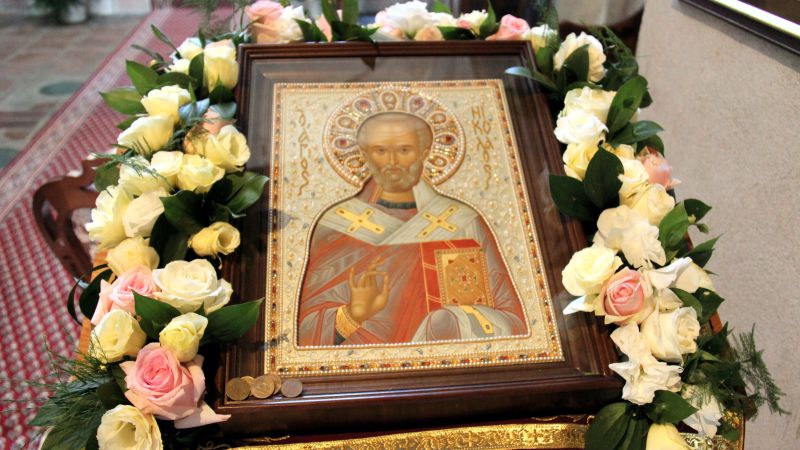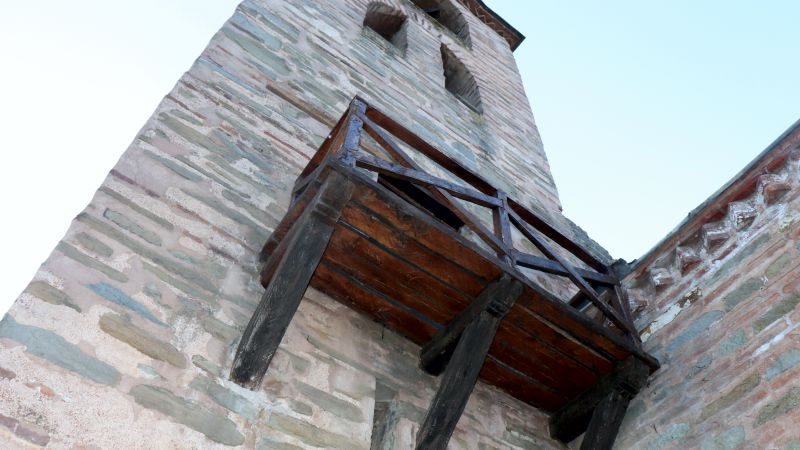Monastery of St. Nicholas
It is located in the eastern part of today’s Kursumlija on a high plateau slope above the mouth of the river Banjska in Toplica. It is about the oldest endowment of Stefan Nemanja (1166-1196), which together with the nearby monastery of St. Virgin Mary, raised between 1159-1166. year, in Toplica, which he ruled as a share prince. The church is single-nave with a sliced dome, built on the model of Constantinople endowments from the period of the Byzantine dynasty of Comnenus. The altar space is three-part, while a special room (annex) was built on the south side, in which there is a tomb, intended for the burial of the founder.
During the reign of Stephen the First-Crowned (1196-1227), an exonarthex (porch) with two high bell towers was added to the west side of the church. After obtaining the autocephaly of the Serbian Orthodox Church in 1219, the seat of the Toplica episcopate was located in this monastery, and for some time also the seat of the metropolitanate. During the reign of King Milutin (1282-1321), a chapel was added to the church on the north side.
Until the Great Migration of Serbs in 1690, the monastery was in function, and then there was a period of stagnation and demolition. In the middle of the 19th century, the monastery was demolished by Sulj Krveš and Mula Halil looking for treasure. Although the church was frescoed, only a few fragments have survived to this day. Archaeological excavations of this site have confirmed the existence of the ancient and medieval necropolis, the remains of the monastery complex (pier, dining room, episcopal palace).
The Monastery of St. Nicholas has been declared a cultural monument of exceptional importance and represents one of the most important churches in Serbian medieval history.
The first endowments of Stefan Nemanja
The ancestor of the ruling dynasty of Nemanjić and the creator of the modern Serbian state in the Middle Ages, Stefan Nemanja, began his state, military and construction thought in today’s Kursumlija.
Stefan Nemanja was born in Ribnica (today’s Podgorica) as the youngest son of the Serbian lord Zavida in 1113, and died on February 26 (13), 1199 in the Serbian monastery of Hilandar in Greece. His descendants were Vukan, Stefan and Rastko (Saint Sava). At that time, Byzantium was ruled by Emperor Manoel I Comnenus (1143-1180), and then by Isaac Angelus (1185-1195). Nemanja’s biographers were St. Sava, Stefan the First Crowned and Domentijan.
When he grew up to his youth, he received the administration of the area around Toplica, Ibar, Rasina and Reka. It is assumed that the seat of the principality was in the area of Toplica, ie today’s Kursumlija.
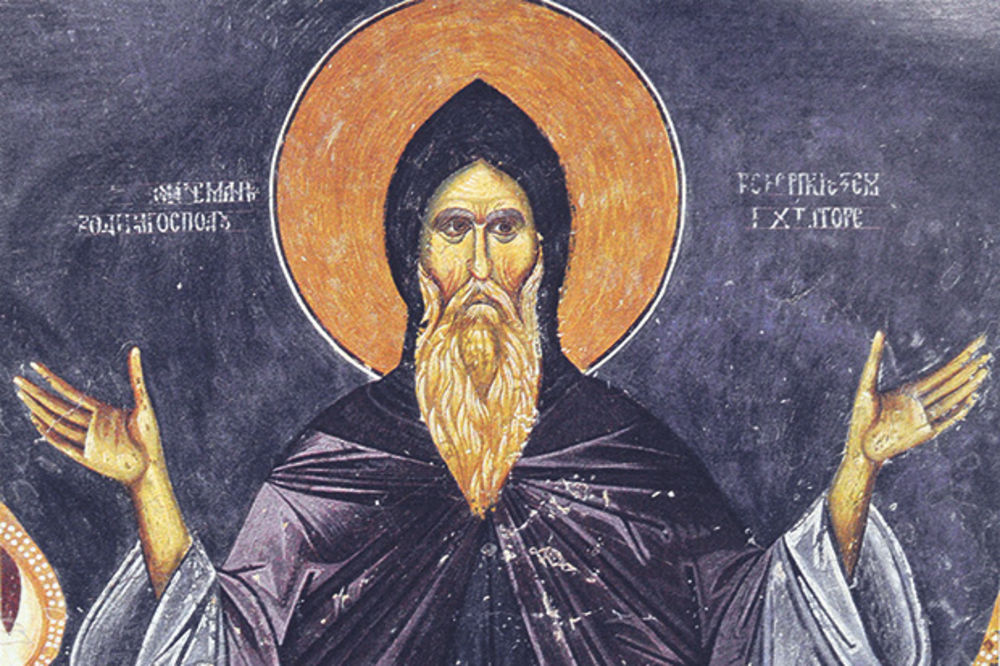 During the meeting of Nemanja and the Byzantine emperor Manojlo Komnin in Nis in 1159, Emperor Manojlo granted Nemanja the “imperial dream”, court dignity, and then gave the parish of Dubocica (the area around today’s Leskovac) to him and his heirs. Strengthening his power and reputation, he began to build monasteries in his capital, which is why he came into conflict with his brothers. He raised his first two endowments in Kursumlija: the Monastery of Saint Nicholas and the Monastery of the Most Holy Mother of God. Both monastic churches were covered with lead plates that gave a white reflection in the sun, so this place was named White Church after them.
During the meeting of Nemanja and the Byzantine emperor Manojlo Komnin in Nis in 1159, Emperor Manojlo granted Nemanja the “imperial dream”, court dignity, and then gave the parish of Dubocica (the area around today’s Leskovac) to him and his heirs. Strengthening his power and reputation, he began to build monasteries in his capital, which is why he came into conflict with his brothers. He raised his first two endowments in Kursumlija: the Monastery of Saint Nicholas and the Monastery of the Most Holy Mother of God. Both monastic churches were covered with lead plates that gave a white reflection in the sun, so this place was named White Church after them.
In the struggle for power with his brothers (Tihomir, Stacimir and Miroslav), Nemanja emerged victorious and in 1168 became the GREAT ZUPAN, after which he transferred the seat of the state to Ras. He ruled until 1196, when he handed over the throne to his middle son Stefan and became a monk (Simeon, then Simeon Mirotocivi) on the Holy Mountain, in his endowment to Hilandar, where he died at the age of 86.
